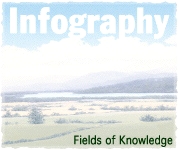
 | |
Stuttering Therapy | |
The following sources are recommended by a professor whose research specialty is stuttering. |
· Guitar, Barry (1998). Stuttering: An integrated approach to its nature and treatment. Williams and Wilkins.
· Culatta, Richard, and Goldberg, Stanley A. (1995). Stuttering therapy: An integrated approach to theory and practice. Allyn and Bacon.
· Curlee, Richard, and Siegel, Gerald (1997, 2nd edition). Nature and treatment of stuttering: New directions. Allyn and Bacon.
· Starkweather, C. Woodruff, Gottwald, Sheryl, and Halfond, Murray (1990). Stuttering prevention: A clinical method. Prentice Hall.
· Zebrowski, Patricia (1997). Assisting young children who stutter and their families: Defining the role of the speech-language pathologist. American Journal of Speech-Language Pathology 6(2), pp. 19-28.
· Guitar, Barry, and Guitar, Carroll (producers), and W.A. "Buddy" Morgan (director) (1998). If you stutter: Advice for adults (videotape). Available from the Stuttering Foundation of America, http://www.stuttersfa.org/).
· Berkowitz, M., Cook, H., and Haughey, M.J. (1994). A non-traditional fluency program developed for the public school setting. Language speech and hearing services in the schools (LSHSS) 25, pp. 94-99.
· Bernstein-Ratner, Nan (1992). Measurable outcomes in instructions to modify normal parent-child verbal interactions: Implications for indirect stuttering therapy. .Journal of Speech and Hearing Research 35, pp. 14-20.
· Bernstein-Ratner, Nan (1997). Leaving Las Vegas: Clinical odds and individual outcomes. American Journal of Speech-Language Pathology 6(2), pp. 26-33.
· Cooper, Crystal (2000). School-based strategies for working with children who stutter: A positive team approach. International Stuttering Awareness Day On-Line Conference, Oct. 1-22, 2000. http://www.mnsu.edu/comdis/ISAD3/papers/ccooper.html
· Curlee, R., and Yairi, E. (1997). Early intervention with early childhood stuttering: A critical examination of the data. American Journal of Speech-Language Pathology 6(2), pp. 8-18.
· Daly, David A. (1996). The source for stuttering and cluttering. LinguiSystems.
· Guitar, Barry, and Guitar, Carroll (producers), Chris Hardaway (director) (2000). Stuttering and the preschool child: Help for families (videotape). Available from the Stuttering Foundation of America, http://www.stuttersfa.org/).
· Holzman, Allan (director) (1988). No words to say (videotape). Amick Holzman Co. http://www.amickepics.com/
· Kuster, Judith M. (2000). Therapy for stuttering. http://www.mnsu.edu/comdis/kuster/therapy.html
· Manning, Walter (1999). Creating your own map for change. International Stuttering Awareness Day On-Line Conference, Oct. 1-22, 1999. http://www.mnsu.edu/comdis/isad2/papers/manning2.html
· Self-therapy for the stutterer (2000, 9th edition). Publication #12. Stuttering Foundation of America. http://www.stuttersfa.org
· Starke, Andreas (1999). Voluntary stuttering: When, how, and for what purpose? International Stuttering Awareness Day On-Line Conference, Oct. 1-22, 1999. http://www.mnsu.edu/comdis/isad2/papers/starke.html
· Stuttering therapy: Prevention and intervention with children (1986). Publication #20, Stuttering Foundation of America. http://www.stuttersfa.org
· Van Riper, Charles (1973). The treatment of stuttering. Prentice Hall.
· Zebrowski, Patricia (1995). The topography of beginning stuttering. Journal of Communication Disorders, 28, pp. 75-91.
"The Infography about Stuttering Therapy"
http://www.infography.com/content/474459901207.html
© 2009 Fields of Knowledge
Essex, Iowa 51638-4608 USA